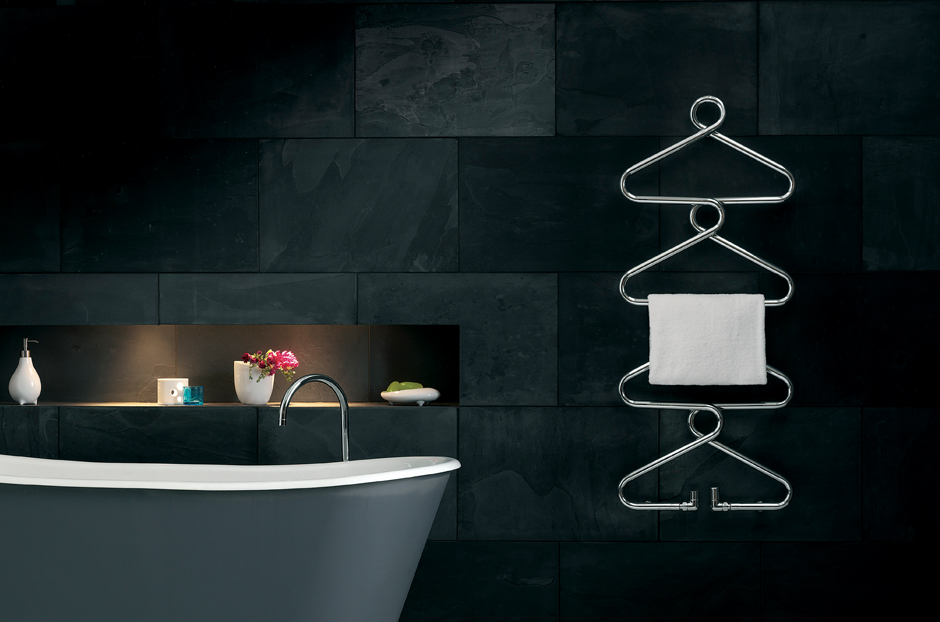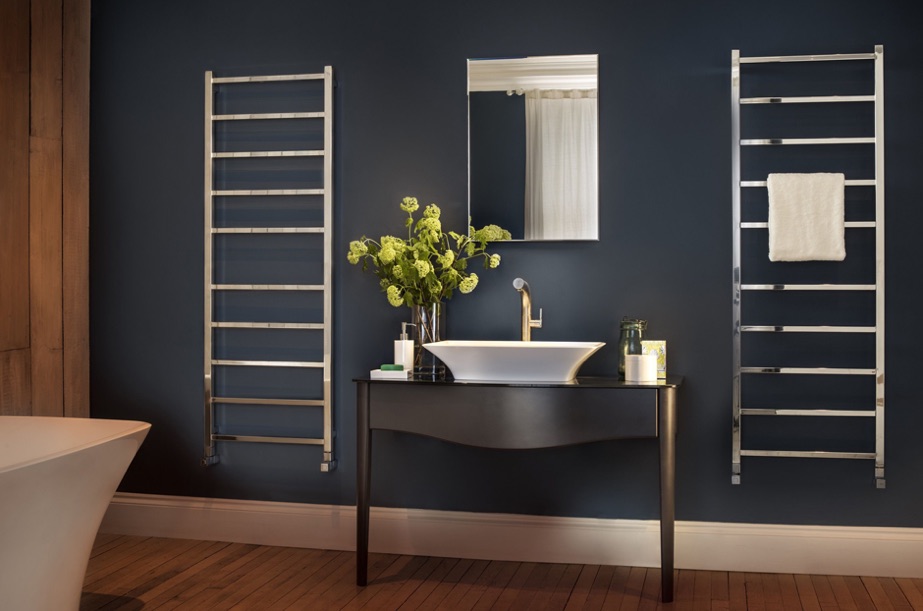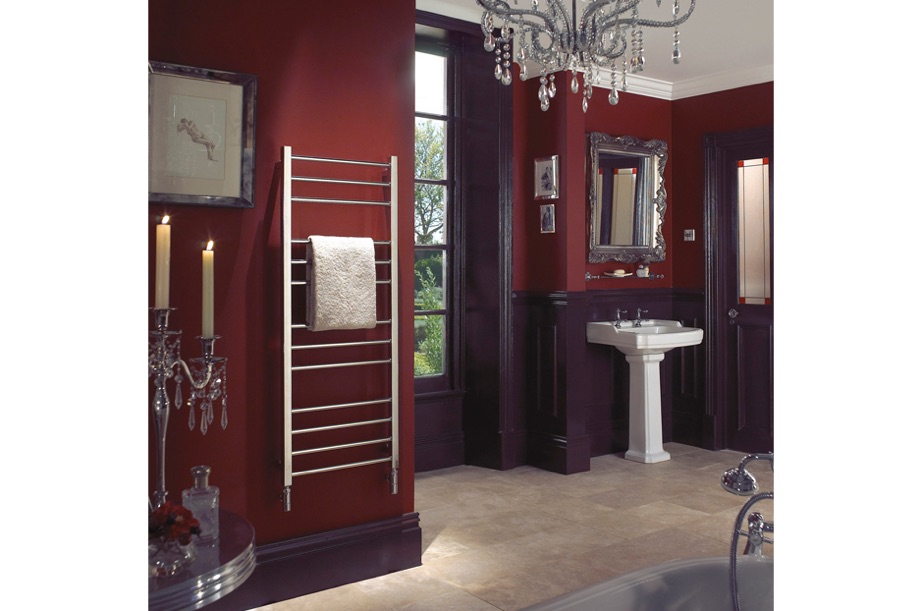Clean and green: the eco-friendly bathroom
Clean and green: the eco-friendly bathroom
Tips for creating a stylish and sustainable bathroom.

Image supplied by Bisque
Reclaiming materials
When it comes to creating an eco-friendly bathroom, give thought to using reclaimed sanitary ware instead of purchasing brand-new. Re-purposing furniture can be an excellent way to create a completely unique look whilst having less impact on the environment. For example, an antique, freestanding copper bath can make a showstopping centrepiece.
Salvage yards are a great source of materials, such as stone, timber beams and handmade tiles as well as bathroom furniture. Some of the items may need refurbishment. If this is too much hassle for you, then a specialist supplier selling fully restored items may be a better bet. Authentic Reclaimation Ltd claims to have everything you need to create a bathroom from Victorian rolltop baths and vintage faucets to modern showers, for example.
Brand new and used bathroom suites are available for sale on websites, such as Gumtree. Whether it’s a Jacuzzi corner bath with multicoloured lights, eight-jet whirlpool or basic bathroom suite – there’s something for everyone. You can also source reclaimed tiles, marble, stone and terracotta from Maitland and Poate. Havwood sells reclaimed wood flooring. Other specialist suppliers include English Salvage.
Image supplied by Bisque
Reusing your existing bathroom fittings
Before splashing out on a new bathroom, work with what you have. New bathrooms can be expensive, but you can reduce the price tag as well as your environmental impact, by figuring out which existing items can be reused in your eco-friendly bathroom. You may only need to replace a few elements. For example, it may be an option to keep your existing shower tray, WC and basin unit whilst purchasing a new shower enclosure. Bringing a new colour into your bathroom can completely transform a room just for the cost of a couple of pots of paint. While it may be tempting to rip everything out and start again, it will help your bank balance and be greener to reuse as much as you can.
Recycling resources
Sustainability can also come from choosing products recycled or manufactured from materials previously used for something else and given new life. Energy efficient aluminium radiators by Bisque are made from recycled drinks cans, old street signs, saucepan and car parts. According to the European Aluminium Association, recycling aluminium uses 95% less energy than refining it from ore. Bisque’s designer heated towel rails show you don’t have to sacrifice style for sustainability. They include stainless-steel options and come in a range of modern, traditional and quirky designs. Dulux uses reclaimed paint destined for landfill or incineration and re-engineered as a new matt product called Evolve Matt. It’s the company’s first paint made with 35 per cent recycled paint content.
Ensuring that manufacturing processes are eco-friendly and don’t produce high levels of emissions is also a part of sustainable bathrooms. For example, Eco Friendly Tiles manufactures carbon-neutral tiles with up to 40%-plus recycled content.
Natural materials
Try to use natural materials that are easily replaced as well as opting for finishing products, like paints, that aren’t pollutants or give off toxins. Besides the colour, it’s important to know what ingredients are in a paint. Many of the big brand, standard paints are petrochemical-laden. Look for eco-paints that are made from natural, raw materials such as limestone, silicates, linseed, citrus fruit oils and waxes. Natural paints are free of odours because they don’t contain solvents or petroleum derivatives. Graphenstone has an impressive ecological range of paints and its factory is powered by renewable energies. The company website explains its products don’t produce waste harmful to the environment and are biodegradable.
Cork is a perfect eco-choice for your bathroom. It’s a truly renewable material as it’s made from bark; no trees are cut down. The cork tree is unique in its ability to regenerate its outer bark. Cork floors are warmer than porcelain tiles (and not as slippery) which makes the material a great choice for bathrooms where you walk barefoot. Suppliers include the Cork Flooring Company which manufactures most of its tiles from the waste product of cork stoppers and other solid cork products. The sealed edges and water-resistant cores make the products suitable for most bathrooms if moisture levels aren’t too excessive – so not recommended for wet rooms, saunas or steam rooms.
Other natural and sustainable bathroom floor choices include rubber and engineered wood. Keep an eye out for certifications from organisations like the FSC (Forest Stewardship Council) that ensures wood is responsibly managed.
Reducing consumption
When it comes to creating an eco-bathroom, reducing water consumption is a must. The average household consumes around 350 litres of water a day, according to the Energy Saving Trust. Flushing the toilet accounts for a third of all the water we use. Most people are familiar with dual flush toilets that can reduce water use up to 50 per cent and the latest rimless loos (no rim around the inside of the toilet bowl) are said to be even more efficient. These toilets are cleverly designed to get more flushing power out of less water. Others simpler solutions include a toilet Hippo or a plastic bottle filled with water in the cistern to reduce the amount of water used per flush.
Aside from shorter showers, one high-tech way to make water go further is to fill it with tiny bubbles. This will reduce the water flow overall but without compromising on pressure. Aerators can be fitted to sink and shower taps to help keep your water consumption down. When you’re shopping for water-efficient designs, look for the European Water label and pay attention to the performance band rating.
Choose high quality products and buy British
To be sustainable, it’s important to buy as locally as possible. Check where bathroom fixtures and fittings have come from. Have they been imported from overseas? To save our planet, we need fewer polluting container ships sailing the seas. Bathroom fittings can be very energy-intensive to produce, but investing in high quality, well-made products that last a lifetime can make all the difference to sustainability. Cheap fittings tend not to last as long and need replacing sooner – meaning more expense for you and the environmental cost is higher too with more materials lost to landfill or incineration. Steel baths last longer than uPVC models, for example.
From reclaimed baths to rimless toilets and cork flooring, it’s perfectly possible to create a bathroom that’s super-stylish and kind to our planet too. Keep an eye out for suppliers who combine great designs with verifiable eco-credentials.

Image supplied by Bisque

